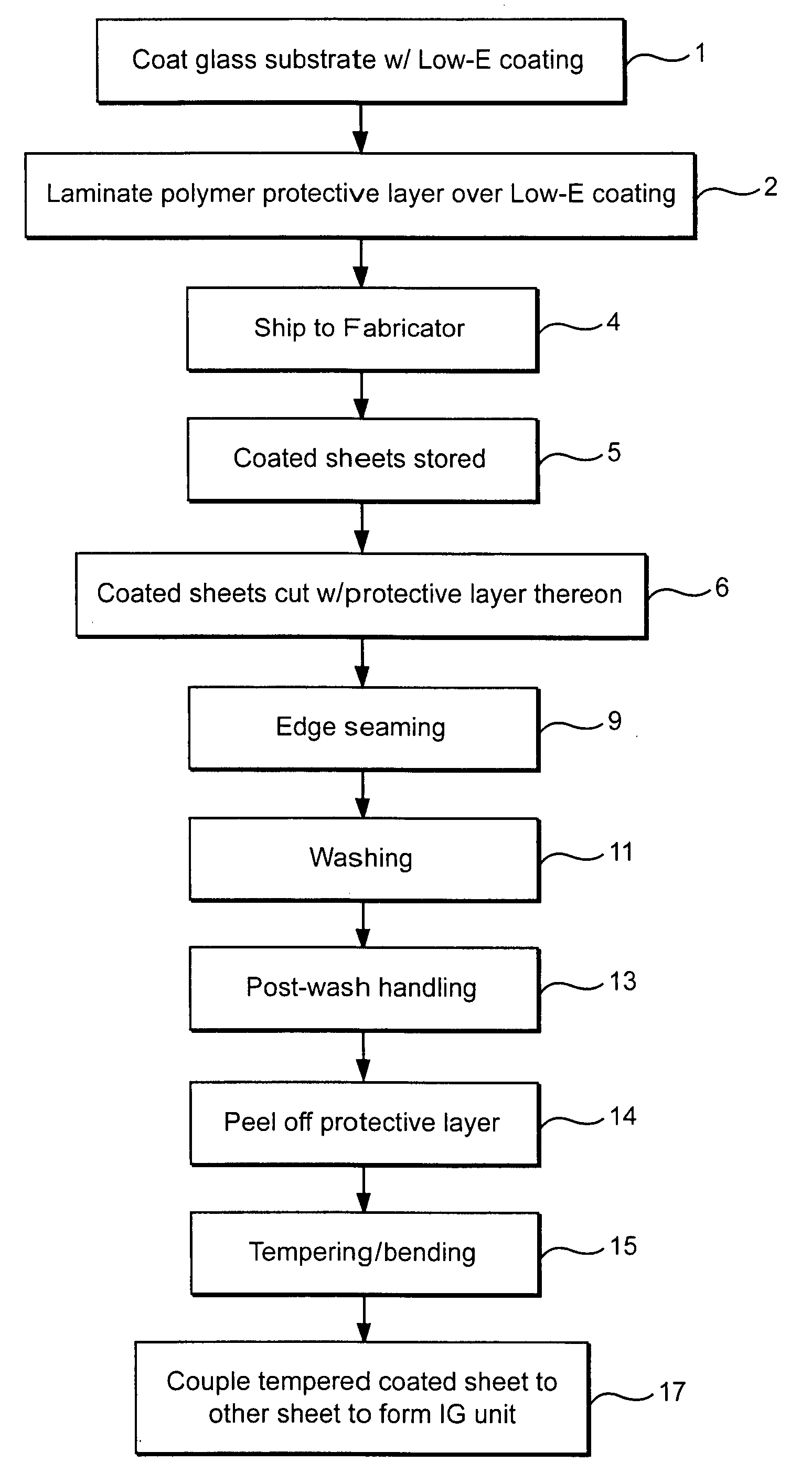Method of making coated glass article, and intermediate product used in same
a technology of coating glass and intermediate products, applied in the directions of instruments, transportation and packaging, packaging, etc., can solve the problems of reducing the production efficiency of coating glass, affecting the quality of coating glass, so as to reduce one or more gaps.
- Summary
- Abstract
- Description
- Claims
- Application Information
AI Technical Summary
Benefits of technology
Problems solved by technology
Method used
Image
Examples
example
[0056]For purposes of example only, and without limitation, an Example coated article was made and tested. Referring to FIG. 5, a low-E coating 23′ was sputtered onto a glass substrate 21. The materials used for the low-E coating 23′ are listed below, in order to the glass substrate outwardly; and the approximate thicknesses in the Example are listed in the right-hand column.
Example Materials / Thicknesses for Low-E Coating 23′LayerPreferredMore PreferredGlassRange ({acute over (Å)})({acute over (Å)})Example (Å)TiO210-150Å20-125Å121ÅSixNy40-450Å70-300Ån / aÅZnOx10-300{acute over (Å)}40-150{acute over (Å)}90ÅAg50-250{acute over (Å)}80-120{acute over (Å)}92ÅNiCrOx10-100{acute over (Å)}12-40{acute over (Å)}37ÅSnO20-1,000Å200-700Å597ÅSixNy50-450{acute over (Å)}80-200{acute over (Å)}n / aÅSnO230-250Å50-200Å100ÅZnOx10-300{acute over (Å)}40-150{acute over (Å)}100ÅAg50-250{acute over (Å)}80-220{acute over (Å)}147ÅNiCrOx10-100{acute over (Å)}20-45{acute over (Å)}36ÅSnO20-750Å40-200Å100ÅSi3N40-750{...
PUM
| Property | Measurement | Unit |
|---|---|---|
| thick | aaaaa | aaaaa |
| thick | aaaaa | aaaaa |
| thick | aaaaa | aaaaa |
Abstract
Description
Claims
Application Information
 Login to View More
Login to View More - R&D
- Intellectual Property
- Life Sciences
- Materials
- Tech Scout
- Unparalleled Data Quality
- Higher Quality Content
- 60% Fewer Hallucinations
Browse by: Latest US Patents, China's latest patents, Technical Efficacy Thesaurus, Application Domain, Technology Topic, Popular Technical Reports.
© 2025 PatSnap. All rights reserved.Legal|Privacy policy|Modern Slavery Act Transparency Statement|Sitemap|About US| Contact US: help@patsnap.com



